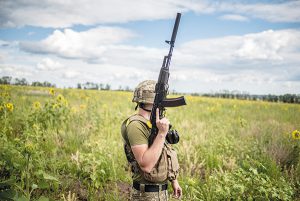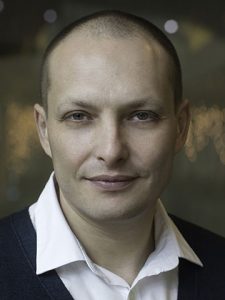The war in Ukraine is, let’s admit it, weird. Russian citizens can, at least theoretically, travel to Ukraine for business or pleasure, though now — only since June — they need visas. The belligerents are parties to a recent deal ensuring safe grain exports. Russian gas keeps flowing to Europe through Ukraine’s pipeline system, albeit in reduced volumes. Countries that supply weapons to Ukraine are also paying Russia for energy and fertiliser imports, thus also funding its war effort. It’s not easy to imagine any of this going on during, say, World War II.
If that tangle of relationships is not confusing enough, both Russia’s stated invasion goals and outsiders’ perceptions of them appear to be shifting shape on a monthly basis.
In one sense, Russia appears to have scaled back its goals. To achieve his stated objectives, the “demilitarisation†and “denazification†of Ukraine, Vladimir Putin attacked on a much broader front than Russia maintains today. When he then had to pull back from Kyiv, Chernihiv, Sumy and parts of the Kharkiv Region, the objectives, which sounded like euphemisms for regime change, slid into the background. At this point, it is probably wrong to call them “goalsâ€: Since they are not attainable in the foreseeable future with the resources the Kremlin — and Russians as a largely passive populace at war — have been willing to devote to the invasion, “dreams†is probably a better word.
In another sense, however, the goals appear to have expanded in reach. Initially, the only territorial ambitions Russia officially declared were confined to the administrative borders of the Donetsk and Luhansk regions, which the respective puppet “People’s Republics†claimed as their land. Recently, however, Russian Foreign Minister Sergey Lavrov has stated bluntly that “the geography has changed,†adding that Russia was now also interested in the Kherson Region in southern Ukraine and the Zaporozhzhia Region in the country’s centre. Lavrov is the highest-placed Russian official to speak more or less openly of such plans. Coupled with the groundwork being laid by the occupying administrations for “referendums†that would call for the invaded areas to join Russia, his words are evidence that Russia intends to annex the territories outright rather than leave them in a gray zone as it did with the “People’s Republics†in 2015.
The easiest way to reconcile these diverging vectors is to assume that, having failed to secure a somewhat reduced Ukraine (minus Crimea and the two eastern regions) run by a pro-Kremlin government, Putin has decided to grab significantly more land instead, as a kind of compensation. But this weird war defies easy explanations. It’s far more likely that any Kremlin “planning†these days is reactive and ad hoc rather than strategic. Kremlin expectations appear to be shaped by battlefield events. Every shift in the military situation leads to a new “plan†that, if carried out, would allow Putin to declare victory.
When it turned out that the Russian military could not take Kyiv or the cities of northern Ukraine, the Kremlin concentrated its forces in the east, completing the invasion of Luhansk Region.
This plan, however, ran into personnel issues. The draft-based armies of the “People’s Republics†have incurred enormous losses (just the admitted military casualties of the “Donetsk People’s Republic†approach 3,000 dead), and the poorer regions of Russia proper have already supplied most of the available recruits willing to sign military contracts — and their contingents account for a disproportionate amount of Russia’s military fatalities. A “hidden mobilisation†echoing across Russian Telegram channels that offers able-bodied men, including prisoners, a chance to fight in Ukraine for attractive pay and their freedom is a slow and iffy process. Without more infantry, Russia cannot risk a frontal attack on Ukrainian fortifications around Slovyansk and Kramatorsk, the way it did in Mariupol and Severodonetsk, and there appears to be no other obvious way to complete the conquest of the Donetsk Region. At the same time, increasingly powerful Western weapons have enabled Ukraine to hit military targets such as munitions
warehouses and command centres deep in the occupied territory, killing more senior officers.
In his interview with one of Russia’s top propagandists, Margarita Simonyan, Lavrov admitted that these weapons have changed the Kremlin’s calculus.
Putin’s attention appears to have shifted to defending Russia’s conquests in the south, where Ukraine has been threatening to launch a major counterattack to retake Kherson, and in the east, where the Ukrainian military has been shelling targets in and near Donetsk. The relatively weak Russian group of forces in the south has been beefed up and reinforced with more aviation and artillery support in recent days as it repelled Ukrainians’ probes.
The Russian military may be understaffed and poorly commanded, but it is adapting to new circumstances, new Western weapons in Ukraine’s hands and a shifting political vision in the Kremlin. It will fight a sound defensive battle, and in the end, whichever side shows more tenacity and fighting spirit will win in the south and, then in the east. If that side is Russia, Putin’s goals will shift again in the direction of February’s frustrated dreams. If it’s Ukraine, Putin will look for a way to claim even less and still portray himself as a winner.
—Bloomberg
Leonid Bershidsky formerly Bloomberg Opinion’s Europe columnist, is a member of the Bloomberg News Automation Team. He recently published Russian translations of George Orwell’s “1984†and Franz Kafka’s “The Trialâ€
 The Gulf Time Newspaper One of the finest business newspapers in the UAE brought to you by our professional writers and editors.
The Gulf Time Newspaper One of the finest business newspapers in the UAE brought to you by our professional writers and editors.

